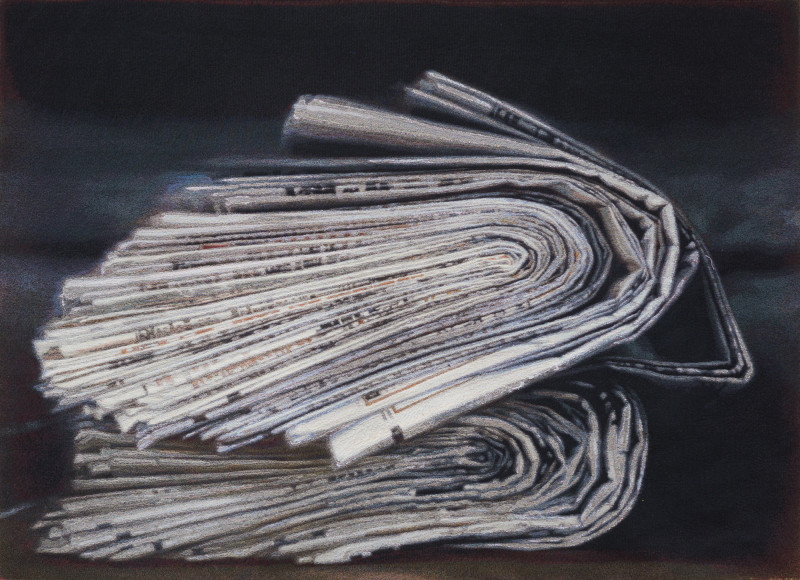
Jacquard tapestry
52.75 x 75 in.
Edition of 6
“My recent work deals with the vulnerability and the fragmentary nature of historical memory, as well as our superficial perception of the world in the media age. My ongoing project entitled Fragmentary Views (2001- ) is a series of paintings based on photographs of piles of newspapers found on the shelves as arranged, marked, or labeled by librarians. What interests me most is the temporary nature of this mundane object loaded with the all-encompassing information of changing daily life: from the front-page news to stock market columns to birth announcements and obituaries. Newspapers are recycled. Life goes on. In these paintings, the close-up view reveals fragmented news pictures and texts of seemingly unrelated events, from the quiet passage of the everyday, to the disturbing conflicts and tragedies of our time. The accidental juxtaposition of images and texts suggests, and at the same time conceals a larger, more complex social picture. This is perhaps our perception of the world in the media age: a bombardment of discrete bits of data – superficial, fragmented, and quite often, literally distorted.
In the compressed newspaper stacks, you can find images of the ruins of the World Trade Center, the spectacle of the day and night bombing of Baghdad, suffering faces of victims of suicide attacks, Chinese government’s propaganda campaigns. What can you say, in the face of what’s happening every day? Nothing comes as a shock. In the newspaper paintings, I have found a way to combine my ideas and interests in the earlier library paintings of decaying books and installations dealing with historical events, in a simple format. Stylistically I have drawn on the history of painting and at the same time maintained a reference to documentary photography, I have used image as text and text as image. My work seeks to engage the dialogue between painting and photography, the discourse on the social and political potential of art, as well as critical issues on Conceptualism and aestheticism.” – Xiaoze Xie
show prices
Prices and availability are subject to change without notice.The copyright of all art images belongs to the individual artists and Magnolia Editions, Inc.
©2003-2024 Magnolia Editions, Inc. All rights reserved. contact us
